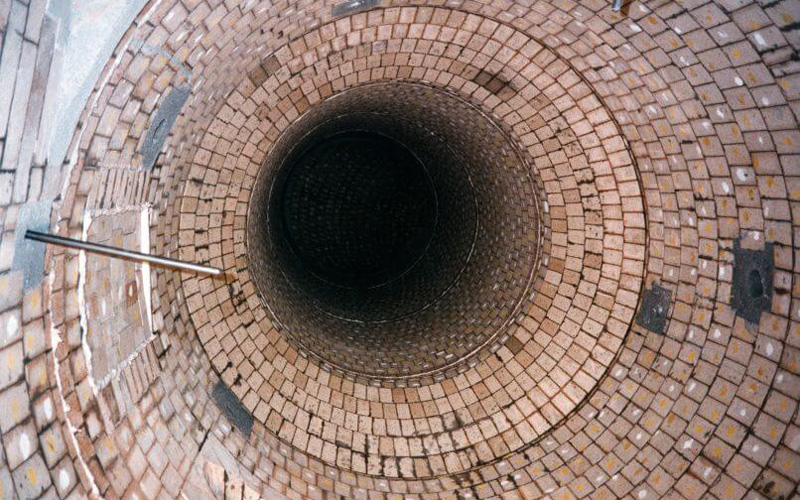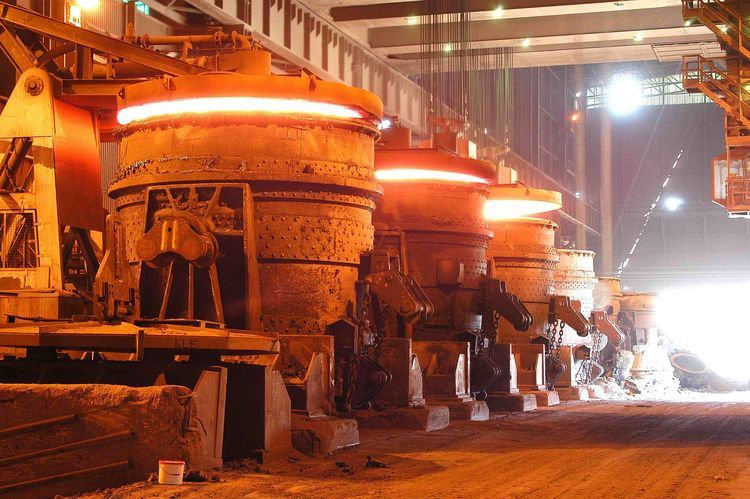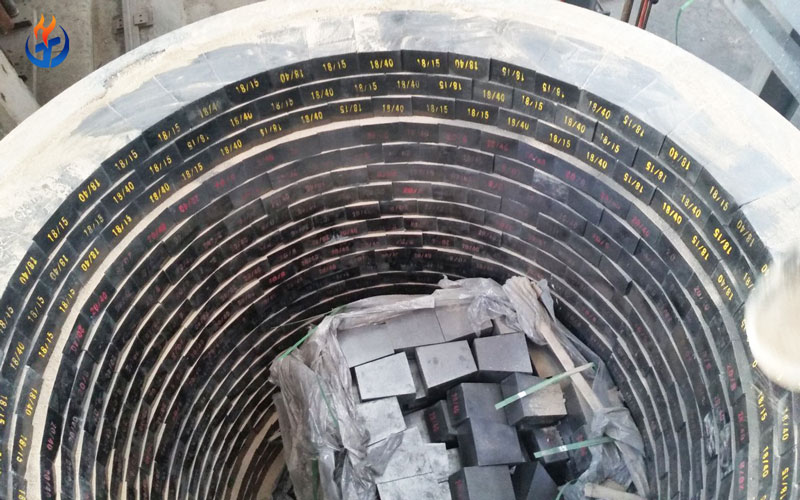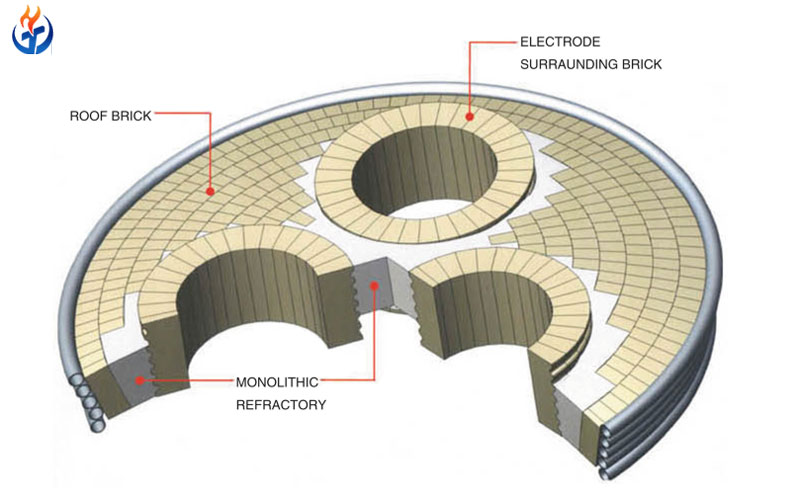The refractory lining of a cement rotary kiln is a critical component that directly affects the kiln’s operational efficiency, lifespan, and clinker production quality. Choosing the right cement kiln lining involves a deep understanding of the operating conditions, chemical processes, mechanical stresses, and thermal variations within different zones of the kiln. This article serves as a comprehensive guide to selecting rotary kiln refractory bricks and ensuring effective kiln shell protection throughout the system.

1. Why Refractory Lining Matters in Cement Rotary Kilns
A rotary kiln in cement manufacturing is essentially a rotating cylindrical vessel inclined slightly to allow materials to move through under gravity. It operates at extremely high temperatures, often above 1400°C (2552°F), to process raw materials into clinker. The inner surface of the kiln must be protected from this intense heat, mechanical wear, and chemical attack.
That protection comes from the refractory lining—a layer of specially designed bricks or monolithic materials that insulate the kiln shell, preserve thermal energy, and prevent structural damage.
If the lining fails, the consequences can include:
Downtime due to unplanned maintenance
Reduced production efficiency
Damage to the kiln shell
Increased fuel consumption
Safety risks for operating personnel
2. Main Types of Refractory Materials for Rotary Kilns
There are two primary forms of refractories used in rotary kilns:
(a) Refractory Bricks
Also known as shaped refractories, these bricks are precast in standard shapes and sizes. Common types include:
High alumina bricks: Excellent thermal resistance and mechanical strength. Suitable for transition and sintering zones.
Magnesia-chrome bricks: High refractoriness and corrosion resistance, especially suitable for burning zones.
Silica bricks: Withstand rapid temperature changes; used in certain specific kiln areas.
Fireclay bricks: Economical and used in less critical zones like the cooler part of the kiln.
(b) Monolithic Refractories
These are unshaped refractories such as castables, gunning mixes, and ramming masses. They are ideal for complex geometries or quick repairs.
Each material type offers different advantages depending on the specific zone inside the kiln.
3. Zonal Requirements for Cement Kiln Lining
A cement rotary kiln typically has several operational zones, each with its own temperature range and chemical conditions. The refractory selection must account for this:
▪ Calcining Zone (Approx. 800°C – 1000°C)
Moderate temperature, but still requires thermal insulation.
Recommended lining: Fireclay bricks, insulating castables.
▪ Transition Zone (Approx. 1000°C – 1200°C)
Temperatures and chemical reactions begin to intensify.
Mechanical stress from material movement is common.
Recommended lining: High alumina bricks or alumina-silica castables.
▪ Burning Zone (Approx. 1300°C – 1450°C)
The hottest part of the kiln.
Subject to chemical corrosion from clinker and volatile alkalis.
Recommended lining: Magnesia-chrome bricks, magnesia-spinel bricks.
▪ Cooling Zone
Lower temperatures, but still requires protection from abrasion.
Recommended lining: Fireclay bricks, abrasion-resistant castables.
Proper zoning ensures that each section of the kiln receives optimized protection, maximizing the lifespan of both the refractory and the steel shell.
4. Factors to Consider When Choosing Refractory Bricks
When selecting rotary kiln refractory bricks, consider the following:
▪ Thermal Conductivity
Lower thermal conductivity ensures better insulation, which saves energy.
▪ Thermal Shock Resistance
The refractory must withstand frequent and rapid temperature fluctuations without cracking.
▪ Corrosion Resistance
Chemical reactions inside the kiln can deteriorate the lining. Refractories must resist attack from alkalis, sulfates, and other compounds.
▪ Mechanical Strength
Bricks must support the weight of clinker and resist abrasion from rotating action.
▪ Ease of Installation and Maintenance
Certain materials like monolithics are easier to install in tight spaces or for spot repairs.
5. Kiln Shell Protection and Monitoring
Even with the best refractory lining, the kiln shell still faces risks, especially if the lining is compromised. Here are a few strategies to ensure effective shell protection:
▪ Proper Lining Thickness
Ensure that lining thickness is sufficient to maintain an acceptable shell temperature (usually under 400°C/752°F). Too thin, and the shell overheats; too thick, and heat loss increases.
▪ Regular Shell Temperature Monitoring
Using infrared sensors or laser scanning systems to continuously monitor the shell temperature allows early detection of hot spots.
▪ Use of Backup Insulation
In some high-heat zones, insulation bricks or fiber blankets can be installed behind the main lining to prevent heat from reaching the shell.
▪ Expansion Gaps
Allow for thermal expansion of bricks to prevent cracking or lining collapse.
▪ Refractory Anchors
In monolithic lining applications, anchors help hold the material in place and reduce the risk of spalling.
6. Common Signs of Refractory Lining Failure
To avoid unexpected shutdowns, plant operators should be aware of the warning signs of refractory deterioration:
Unusual temperature rise in specific shell zones
Visible clinker build-up or ring formation
Brick spalling or pieces falling into the cooler
Drop in kiln production efficiency
Changes in fuel consumption
Increased noise from material movement
Timely inspection and maintenance schedules should be established to prevent larger damage.
Conclusion
Choosing the right refractory lining for cement rotary kilns is a complex but essential process that affects performance, safety, and operational costs. By understanding the functions of different kiln zones and matching them with appropriate rotary kiln refractory bricks or monolithic materials, plant operators can ensure optimal thermal efficiency and kiln shell protection.
The key lies in balancing thermal resistance, mechanical strength, chemical durability, and installation practicality—always tailored to your kiln’s specific operating conditions.
Need help with refractory lining materials or kiln insulation solutions? Contact us for expert consultation and supply of high-performance rotary kiln refractory bricks.



